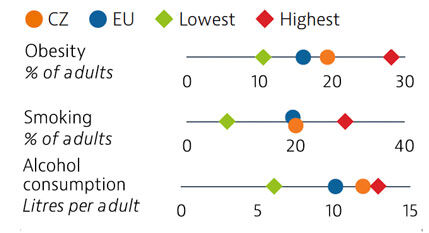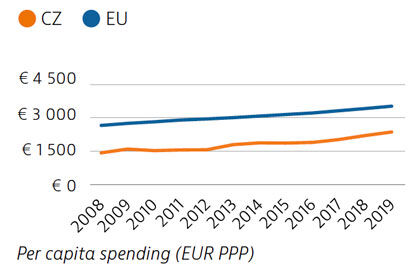Where illnesses or serious health impairments disrupt body awareness and prevent verbal communication, basal stimulation can often overcome the distance and create trust. This method, which is often used in nursing, establishes contact via all of the body’s senses.
This article describes how it works and what possibilities it offers.
What is basal stimulation in nursing?
Basal stimulation is a non-verbal form of contact. It addresses people’s senses by generating targeted stimuli that those affected consciously or unconsciously register or respond to. This promotes the perception of one’s own body and its shape and the boundaries to the surroundings gain more definition again. At the same time, new points of contact with the environment are created.
Depending on the clinical picture and the goal of the treatment, different stimulation routes can be considered, which can be combined with one another. The practitioner develops an individual concept for each affected person.
Origin and origin
Almost three decades ago, nursing scientist Christel Bienstein adapted Andreas Fröhlich’s concept of basal stimulation, which originally came from pedagogy, to nursing. Since then it has become increasingly established as a successful treatment method there. Interested nursing staff can learn the techniques of basal stimulation in appropriate further training.
Basal stimulation – goals and areas of application
Basal stimulation initially serves to create interpersonal contact. Building on this, it should help those affected to communicate and convey their needs and emotions.
10 central life themes
Basal stimulation targets ten different life issues, which can be more or less the focus depending on the person affected. Especially for babies and children, discovering the world and one’s own development in it is just as important an aspect as experiencing the outside world and feeling one’s own life .
People in middle or advanced age often miss the feeling of being able to shape their own lives , experience self-determination and develop their own rhythm . For all those affected, the experience of security and trust is likely to be just as essential as establishing relationships and experiencing encounters .
Especially very sensitive and spiritual people often miss the meaning and meaning of life when they are physically or mentally impaired. The final aspect of life issues is the preservation of life and development in general and again affects most people.
Basal stimulation – methods
Depending on the treatment goal, basal stimulation is used in different ways. Somatic stimulation involves addressing the body surface, i.e. the skin and subcutaneous tissue, through pressure, temperature and different textures of washcloths and other care products. Daily personal care is also part of this method to a certain extent. This can include a vibration component, provided those affected find this pleasant. Vestibular stimulation activates the balance system and can be achieved through changes in position or rocking movements. The methods mentioned are also summarized as basic elements.
In contrast, there are some structural elements that are more specifically tailored to the personality of those affected. This includes tactile-haptic stimulation, in which various surfaces or structures are placed in the hands of those affected. This results in a literal “grasping” of the object and the situation.
Other constructive methods for visual stimulation, i.e. addressing the optical system, work with light, shapes and colors in an intensity and presentation adapted to the needs and possibilities of those affected. Accordingly, acoustic stimulation is aimed at hearing. Olfactory stimulation is intended to stimulate the sense of smell and works, among other things, with perfume and other smells that are familiar to the person from their past. As with gustatory stimulation for the sense of taste, foods and spices are used that awaken memories of foods that we enjoy.
If the nurse registers a reaction from the person concerned when using a basal stimulation method, she responds, for example by touching a raised hand. If the person reacts defensively, she breaks off the stimulus or changes it until an approving gesture or facial expression and relaxation occurs. Through the joint work of the nursing staff and those affected, they notice that their answer has been understood and that they can communicate in this way.
Basal stimulation – qualification
Anyone who would like to use basal stimulation in practice can get to know the methods through a basic course and the subsequent advanced course and apply the first techniques. Both courses only last a few days. A more in-depth training course to become a basal stimulation practice companion imparts all the important knowledge in 540 hours of lessons and self-study over the course of a year. This includes both the theoretical and the practical basics that enable you to use the method, to carry out your own courses in basal stimulation and to accompany carers.
Basal stimulation – application
Areas of application for basal stimulation are various clinical pictures that affect the nervous system. Memory, perception and communication suffer as a result. These can be neurodegenerative diseases with increasing destruction of nerve structures, such as dementia and multiple sclerosis, or even a stroke.
Basal stimulation is also used in palliative care and helps to reduce anxiety in those affected and to stay in touch with life. Another area of application in which a very good stimulus response is often achieved is the care of premature babies. For example, they perceive the mother’s smell or like to grab structures that feel similar to the umbilical cord.
Basal stimulation also offers relatives many opportunities to improve the sensation and perception of those affected. You can tell the caregiver what the person being cared for liked to eat, what music they liked, or whether they liked massages. This and much other important information will help you use basal stimulation. After appropriate consultation, they can often carry out many methods themselves, such as moistening the mouth or rubbing.









